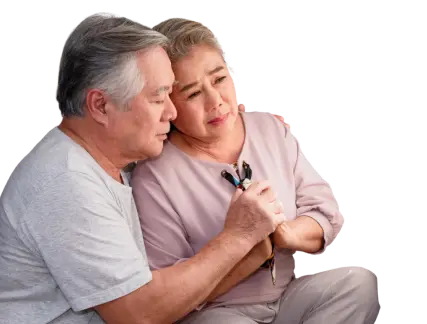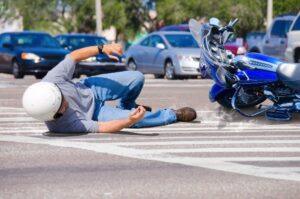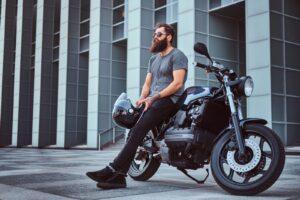With warmer weather just around the corner, nearly 9 million motorcycle enthusiasts nationwide are starting to get the itch to hit the open road on their motorcycles. For approximately 125,000 motorcycle owners in Missouri and over 100,000 in Kansas, the first ride of the spring is a ritual—tuning up the engine, polishing the chrome, trying on the helmet, and smelling the earthy aroma of the perfect leather jacket.
For many bikers, this season will begin with the purchase of a new motorcycle. More than 500,000 new motorcycles are sold every year in United States. Many of those new bikes are purchased by beginner bikers who are less concerned about rituals and more concerned about safety.

If you are a beginner biker in the market for a new motorcycle, you may be wondering, “What kind of motorcycle is the safest to ride?” This article discusses what a beginner biker who are concerned about safety should consider when shopping for a new motorcycle. If you have questions about motorcycle safety or motorcycle laws in Missouri or Kansas, or if you have been in a motorcycle accident, call the motorcycle attorneys at Foster Wallace, LLC.
What Safety Features of a Motorcycle Should I Consider When Buying a Motorcycle?
Contact our Kansas city personal injury lawyers now.

Each style of motorcycle has distinct features that accommodate specific styles of riding. Before you know which style of motorcycle to consider, you should determine which style of rider you are. Choosing the wrong style of motorcycle for the type of rider you are can be costly, impractical, uncomfortable, and dangerous, especially for novice or inexperienced riders. Choosing the right style of bike for the type of rider you are is critical for proper safety, maximum comfort, practical riding, and enhancing your riding experience.
Here are some common motorcycle features that will affect your safety and comfort when you ride that you should consider before purchasing a motorcycle:
- Riding position. Your riding position on your bike significantly affects many aspects of your riding experience. Riding positioning can affect your:
- Control of the motorcycle;
- Maneuverability;
- Turning;
- Wind resistance;
- Stability;
- Comfort; and
- Fatigue.

Motorcycles designed for an upright or slightly reclined riding position offer greater comfort and stability, particularly on longer rides, but provide less control and reduced maneuverability because of a lower center of gravity and smaller ground clearance. Riding in an upright position without a windshield provides little to no wind reduction, which can significantly increase your fatigue the longer you ride.
- Engine size and displacement. The size and displacement or “cc” (cubic centimeters) of the motorcycle engine can vary with design. The larger the cc, the more powerful the motorcycle. Motorcycle engine displacement typically ranges from the lower displacement (300 cc) to the higher displacements of larger cruising and touring bikes (500 to 750 cc). Many touring bikes are over 1,000 cc, with many popular touring bikes as high as 1,650 cc. The largest cc-engine produced on a motorcycle is over 1,900 cc. Beginner riders should gain experience on a motorcycle with a lower displacement and work their way up as they gain experience.
- Seat height. Seat height can make a huge difference for the rider’s safety, both while riding and when stationary. While riding, a bike with a lower seat design provides a lower center of gravity and increased stability. When you come to a stop, a lower seat design makes it easier to ground both of your feet and balance the stationary bike. Beginner riders should consider a lower seat design.
- Weight. Likewise, the weight of the motorcycle can be a significant safety factor. A heavier bike is more stable on the highway but can be less maneuverable and more difficult to control in a turn, when many accidents occur. Additionally, heavier motorcycles are much more difficult to balance when stationary. If you “dump” a heavy motorcycle or let the motorcycle fall to its side while stationary, it can be extremely difficult, if not impossible for some riders, to lift upright.
- Stability. The trade-off for a larger, less maneuverable bike is the stability and comfort of a heavier and more stable machine suitable for longer rides. Beginner riders in the market for a motorcycle must consider the type of riding they plan to do and carefully balance the pros and cons of each of these motorcycle features, which can significantly impact your safety on the road.
- Antilock Braking System (ABS). In the largest study of its kind, conducted by the Insurance Institute for Highway Safety, the antilock braking system (ABS) on motorcycles was found to reduce motorcycle driver fatal crashes by 22 percent per 10,000 registered vehicle years. When considered by motorcycle design, ABS was associated with a 32 percent reduction in crash rates for standard and cruiser motorcycles and a 25 percent reduction for touring and sport touring bikes. For sport bikes, the percentage fell to 19 percent, and for super-sport motorcycles, it fell to only 12 percent.
What Are the Different Styles of Motorcycles?
Buying a motorcycle is like buying a car—there are a variety of styles to choose from. Which style of motorcycle is right for you depends on your purpose for riding and the style of riding you prefer. If you enjoy the thrill of fast speeds and high torque, then a standard design is probably not the style of bike you want. If you prefer more scenic, long-distance rides, then a super-sport style of motorcycle is not a very practical purchase.
Understanding the many different styles of motorcycles and how they function will help you determine which style of motorcycle will be safest, more comfortable, and most practical for you. Here are the most common styles of motorcycle that are available for road use.
- Standard Motorcycles. If your primary reason for buying a motorcycle is practicality—you just need to get from point A to point B—then a standard style of motorcycle, also referred to as a “roadster,” will likely suit your needs. “Standard” motorcycles have a very basic and consistent design. They promote an upright riding position with foot pegs aligned under the knees and handle bars usually situated below shoulder level. They typically adopt a smaller engine displacement and higher ground clearance than other styles of bike for better handling and maneuverability. The roadster is well-suited for beginning riders because they are lighter and more manageable than the larger, heavier, and more powerful cruisers and touring bikes.
- “Choppers”. Chopper-style motorcycles are more uniquely designed than standard bikes, with the distinctive feature being a much longer wheelbase created by dramatically extending the front forks. This, in addition to a typical wide rear tire designed for increased acceleration, significantly reduces turning range and maneuverability. This is a trade-off, however, for lighter weight and increased speed derived from “chopping off” the bulky, heavy engine accessories of the cruiser design. Choppers are stylish and often uniquely customized by the individual owner, which can increase the cost of purchasing and maintaining a chopper motorcycle.
- “Cruisers”. The cruiser style of motorcycle is what most people associate with the historic Harley Davidson or Indian brand motorcycles. Like the standard cycle, cruisers have maintained a consistent design over the years, but have adopted the modern advances in technology and safety features that make them far from standard. Designed for more comfort necessary for “cruising” longer distances, the riding position allows the legs and feet to extend forward, with the handle bars closer to shoulder height and the upper body slightly reclined. Cruisers are considerably heavier and have a lower center of gravity to provide comfort and stability but can reduce maneuverability and limit cornering. Most cruisers have removeable windshields and can be highly accessorized for style.
- Touring Bikes. Touring bikes are larger, heavier bikes designed for long-distance or cross-country riding and bike tours. They are fully loaded with all the whistles and bells to maximize safety, comfort, and engine capacity necessary for long-distance excursions. Touring engines have high engine displacement and high torque for increased power to accommodate a passenger and store luggage. Because wind resistance can be taxing on the body on long rides, a large windshield base displaces the wind and protects the rider, providing a more comfortable ride. Most touring bikes are equipped with advanced safety features and amenities like:
- Antilock brakes;
- Airbag;
- Cruise control;
- Traction control;
- Hill-assist or Hill-hold control;
- Temperature control;
- Electronic communication systems;
- On-board navigation systems; and
- High-volume sound systems.
While designed for maximum safety and comfort, touring bikes are better suited for more experienced riders and can be “a bit too much bike” for the beginner rider.
- Sport Motorcycles. Sport motorcycles are light but powerful machines favored by riders who prefer higher speeds and greater control. The rider is postured with the upper body leaning forward, with hands in front, below shoulder level, knees bent, and feet tucked below the seat. Riding in this posture allows for greater control of the bike when cornering and accelerating, but is comfortable enough to accommodate daily road use. Sport bikes have sleek body design and fairing covers for increased aerodynamics at higher speeds.
- Sport-Touring Motorcycles. As the name suggests, the sport-touring motorcycle design is a mix between the touring and sport designs. Sport-touring bikes combine the sport features of lighter body frames and similar but slightly larger engine design, and touring features such as saddlebags, higher windshields, and larger fairings. The rider’s posture on the sport-touring bike is more upright than on the standard sport bike. This, coupled with a larger seat and a more powerful engine, allows the sport-tourer to carry a passenger.
- Super-sports. Super-sport motorcycles are similar to sport bikes but are designed according to racing standards for extreme speeds. Their power-to-weight ratio is higher than any other mass-produced motor vehicle. The rider’s position is similar to the sport-bike rider but closer to a near prone position for maximum control at high speeds. Super-sport bikes are not recommended for inexperienced riders.
- Unclad Motorcycles. Unclad sport motorcycles, nicknamed “naked” or “hooligan” motorcycles, are a “watered-down” version of the sport and super-sport designs. They have less fairing and body panels than the sport and super-sport bikes and generally have lower horsepower. The design allows a slightly less forward-leaning riding position, which is more comfortable than the sport design. With a more upright posture and increased control and maneuverability, unclad bikes with low horsepower can be well-suited for beginner riders.
- Dual-Purpose Bikes. Dual-purpose motorcycles are adaptations of off-road or “moto-cross” bikes that satisfy legal requirements for road-riding by incorporating required features like turn signals, brake lights, horns, and satisfactory emissions. They adopt larger engines than solely off-road bikes and incorporate an upright riding position.
Which Style of Motorcycle Is Involved in the Most Fatal Accidents?
Many factors affect a rider’s safety on a motorcycle. Some of the most prevalent factors include:
- The rider’s experience;
- The rider’s age;
- The rider’s assumption of risky behavior (speeding, lane-changing);
- Helmet use;
- Intoxication; and
- Engine displacement.
According to a study conducted by the Insurance Institute for Highway Safety, which accounted for risky behavior, engine displacement, and helmet use, super-sport motorcycles were, by far, the most dangerous style of motorcycle. Although super-sport drivers who were fatally injured were most likely to have been wearing a helmet and least likely to have been impaired by alcohol while riding, they were most likely to have been speeding, compared to riders on other types of motorcycles. Consequently, the fatality rate for riders on super-sport motorcycles were four times higher than those for cruiser or standard motorcycles. Additionally, increased engine displacement was associated with higher driver death rates for each type of motorcycle.
Which Style of Motorcycle is the Safest for Beginner Riders?
Riding a motorcycle is thrilling. But riding is only fun when it is safe. Standard motorcycles and cruiser motorcycles are the safest motorcycles with the lowest reported motorcycle accident fatalities. ABS on these styles of bikes increased rider safety by 32 percent. Beginner riders considering purchasing a motorcycle should carefully consider all the relevant safety features of each style of motorcycle and consider a standard or cruiser bike with ABS as their first bike on which to gain safe riding experience.
If You Need Help After a Motorcycle Accident, Call the Experienced Motorcycle Accident Attorneys at Foster Wallace, LLC
At Foster Wallace, LLC, we hope you enjoy every motorcycle ride and never need assistance because of a motorcycle accident. However, every rider knows that motorcycles are inherently dangerous and that motorcycle accidents are inevitable. If you or a loved one are involved in a motorcycle accident, the experienced motorcycle accident lawyers at Foster Wallace, LLC, and always available 24/7 to assist you.
Our legal team has a combined 50 years of experience handling motorcycle crash cases in Missouri and Kansas. We offer caring professional advice in every case and will help you establish who was at fault in your accident, value your damages, and negotiate a fair settlement with the insurance company.
Recovering from a motorcycle accident can be long and difficult. But the award-winning attorneys at Foster Wallace will make it easier by providing you the professional attention you deserve. Call Foster Wallace today at 816-439-8665 for a free initial consultation to assess your case. We are ready to help.




